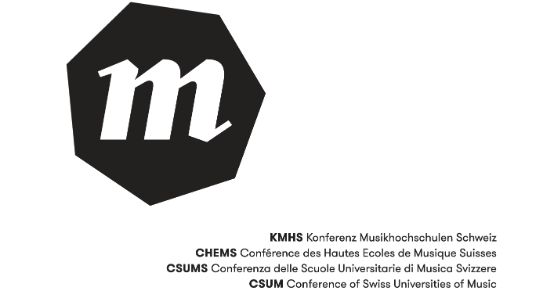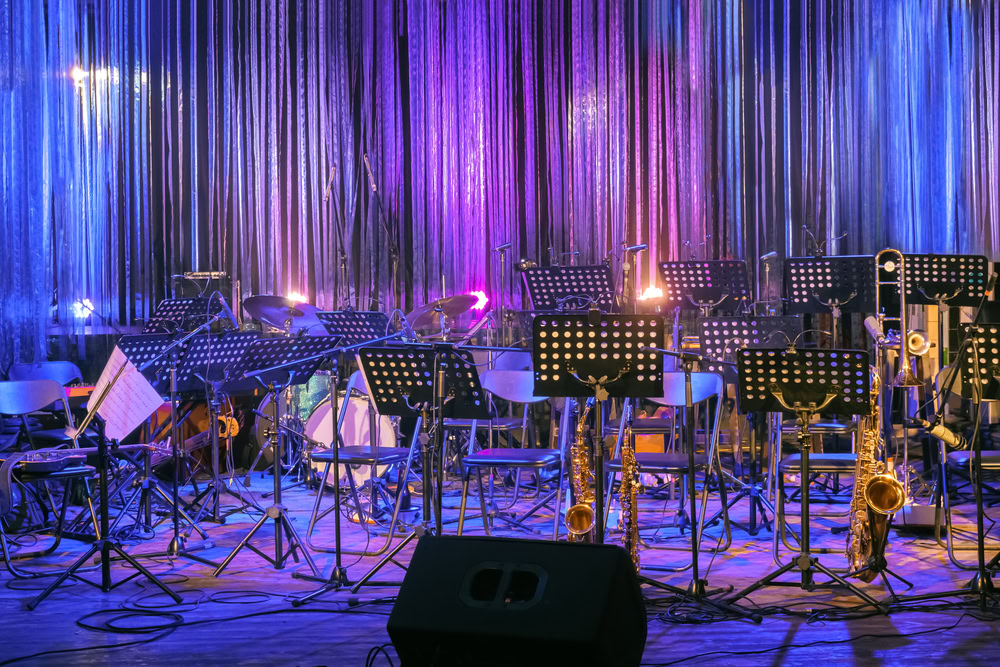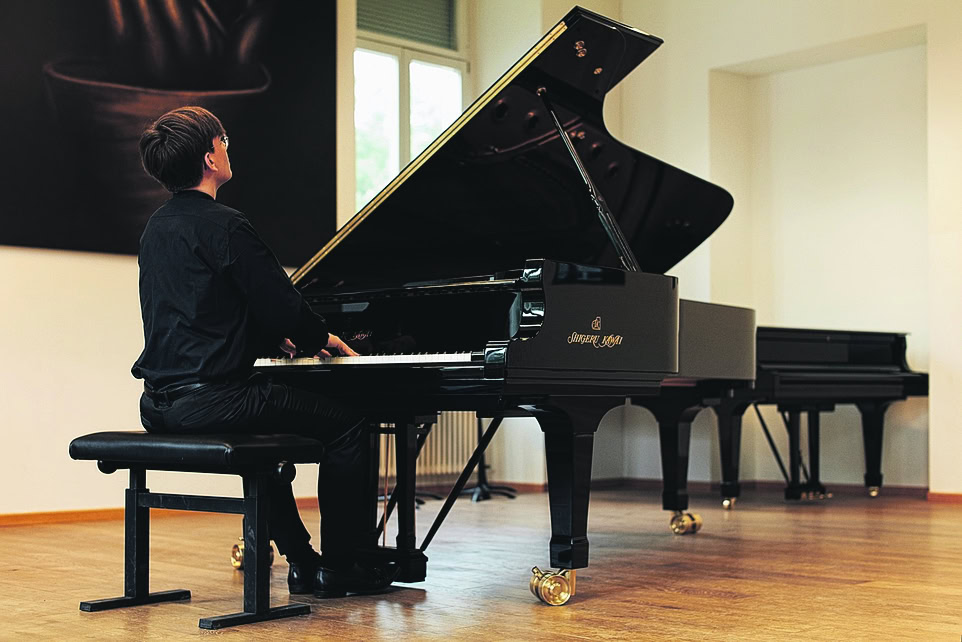Digitalizzazione and superior musical istruzione
Following the major adjustments imposed by the COVID-19 crisis, Swiss music universities have continued their efforts to integrate digitalization into their activities.

Antoine Gilliéron - Now that the ashes of confinement are gradually falling, stakeholders in higher music education in Switzerland can question themselves more deeply about the essential steps in the implementation of digitalization processes that are both effective and facilitators for all as well as respectful of both people and the environment.
For successful digitization, an art college must undertake a whole series of steps, from the maturity analysis to the launch of a digital strategy.
Thus, an artistic teaching establishment wishing to go digital would have to make changes to its relationship (digital or not) with students and collaborators, to the use of the data it has or would like to collect in a systematic way and to the automation of administrative processes. However, it is essential that it includes this digitization using the resources it has at its disposal.
The progress of an organization in digital matters (i.e. the evaluation of its degree of digitization) is measured by taking into account its technological practices combined with its motivation to enrich and deploy this knowledge. As a consequence, the reflection on a digitization process by a music education institution should be based on the following elements:
Student experience: the academic institution has put in place the possibility of interacting with students in order to gather useful data for the adjustment of study and communication plans;
- Innovation pédagogique : l'organization a adapté ses méthodes d'enseignement et de délivrance des formations aux innovations digitales ;
- Strategy: the training institution prioritizes the development of digital projects and can clearly define the skills it needs to guarantee the success of the school and its reputation;
- Organization : the resources available are sufficient and the administration is assez flexible to react quickly to technological changes;
- Digitalization of processes: the training institution has integrated digital channels for communication, processes and services;
- Collaborative work: Collaboration between employees takes place via digital platforms and internal experts are responsible for managing digital issues;
- Information technology: The internal IT service is able to integrate new products and services quickly and efficiently;
- Culture and expertise: Digital expertise occupies a central place in the development of the school and the staff are experts in digital products and services;
- Management of change: The digital transformation follows a strategic plan and the management objectives are clearly defined.
Since the first use of technology in music and his apprenticeships that Beethoven realized in his oeuvre La victoire de Wellington from the inventor of the computer, Johann Nepomuk Maelzel, to the present day, when the hybridization of practices between the lecture hall and the computer has strengthened the transmission of musical knowledge, the use of new technical tools in the service of music education has a long tradition. The computer is a tool that can help to improve students' learning but also to improve the quality of teaching. In this objective of teaching and learning by digital means, the main measure is to increase the hybridization of practices, i.e. the teacher can integrate the technology in the transmission of knowledge, before, during or after classes.
Cependant, la condition sine qua non This increase in digital teaching is due to the ability of digital integration to bring added pedagogical value and to change the didactic logic of teaching that is sometimes too prescriptive and not as focused on the student. The digitalization of teaching therefore constitutes a supplementary corpus to the pedagogical arc of the teacher - in other words, the technology is the pedagogy or the art of the teacher prime on the tools he uses to express it.
As a result, the principles underlying the integration of new technologies into music education are as follows:
- La technologie n'est pas une fin en soi ;
- The use of this technology responds to a need;
- The computer is only of interest if it improves education.
Pour un futur (digital) qui fasse sens
Inexorable art of presence, music has never failed to interrogate contemporaneity over the course of its fabled history. At the beginning of the century, the sanitary crisis of 2020 opened with a vengeance at the start of the previous one and the outbreak of the devastating fire of 1914, the teaching of music questions its interactions with the digital age, which is now a fundamental issue from a political, economic, environmental, social and scientific point of view.
Distance learning, globalized networks, augmented reality, artificial intelligence, TIC, metadonnées and other digital learning environments are just a few examples of technological developments that are transforming the world of art, thought and research. At the heart of the daily lives of students, professors and the public, these advances in the human mind are transforming the ways of teaching and learning, opening up new perspectives for academic activities, offer useful tools for producing and sharing knowledge, thereby promoting the emergence of transversalities with other forms of art and strengthening the democratization of culture.
The digital age is also a factor of change and innovation for the administrative and technical services of higher education, which need to streamline their processes and make them more efficient at the same time. The digital can thus allow the music higher education sector to evolve in terms of its range of training, services and research, as well as the new professions that it helps to create in order to generate value for society. The avant-garde of civilization that artists have formed over the years thus lends its voice to the common good, helping to build a digital universe that is ever more ecological and a conveyor of meaning where poetry can harmoniously unfold, lumières et humanisme in the context of the digital transformation underway in the academic world and in society, and this in the service of music and its intergenerational transmission.
Digitization-and-music-studies
Summary: PS - After the major adjustments that were necessary to overcome the Covid crisis, Swiss music universities are now moving forward with digitalization. For this to be successful, many steps are necessary, from analysis to the implementation of a strategy. This must include the forms of contact with students and staff, the use of existing data or data to be collected and administrative processes. Digitalization must be based on existing resources.
Computer science supports student learning and increases the quality of teaching. The most important step is therefore to use hybrid practices more often in knowledge transfer, whether before, after or during lessons. For this to really bring added value, the sometimes overly narrow didactic guidelines must be reconsidered and geared more towards the learners. The basic guidelines for the integration of new technologies in music education are derived from this: Technology is not an end in itself. - The use of a technology meets a need. - Digitalization is only of interest if it advances pedagogy.
Distance learning, networks, augmented reality, AI, ICT, metadata and other digital learning environments are changing art, thinking and research. In the everyday lives of students, lecturers and their audiences, they are changing the way we teach, learn and research.
Administrative and technical services are also affected by digitalization. This increases the importance of universities in terms of the training, services and research they offer. They are creating new professions and thus added value for society.
Strengthening-digitalMusic-in-Society
Strengthening Music in Society provides musicians, music students and those working in the music education sector with resources and tools. The aim is to help Higher Music Education Institutions (HMEI) to strengthen the social relevance of music education and improve access to music education, but also strengthen the impact of music, art, culture and cultural education on society.
The material published are outcomes of the project Strengthening Music in Society conductec by the Association Européenne des Conservatoires, Académies de Musique et Musikhochschulen and supported by the Creative Europe Programme.
The material provided by following the QR-code is divided into different themes and can be used for different purposes:
- to raise the social responsibility of artists and to advocate for the arts at different government levels
- to open the HMEIs' educational offer towards more diversity
- to embed entrepreneurial skills in the education of the music students for their future as professional musicians
- to help students and teachers internationalize their careers
- to explore and discuss new Learning and Teaching models
- to increase the quality of early childhood music education, and thus extend the audience of tomorrow
- Last but not least, to encourage the use of digital media and digital-based learning tools in music teaching
For more information:








